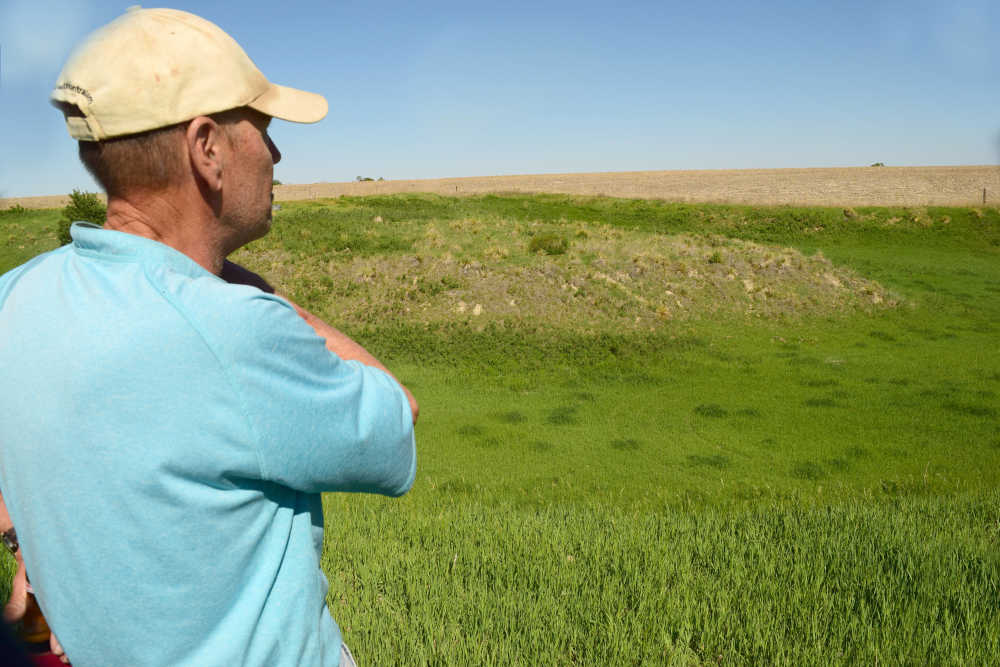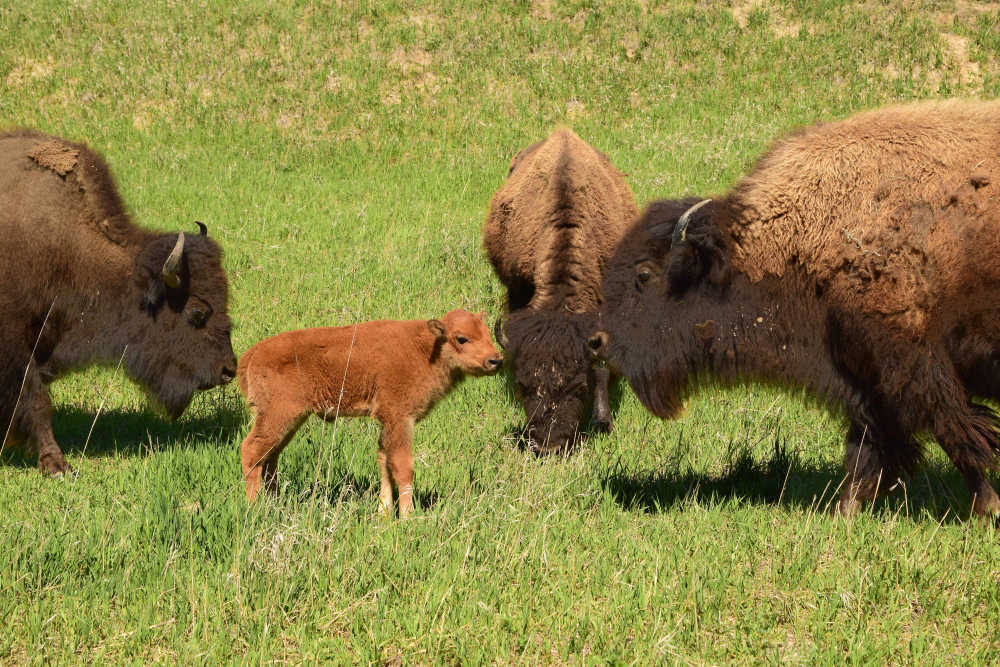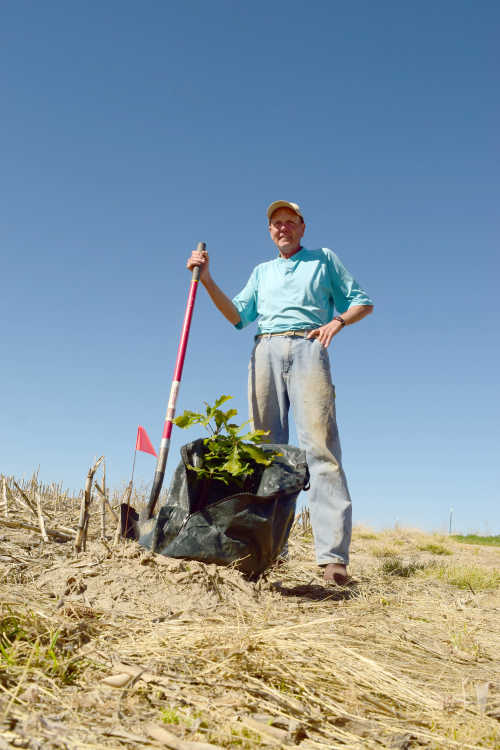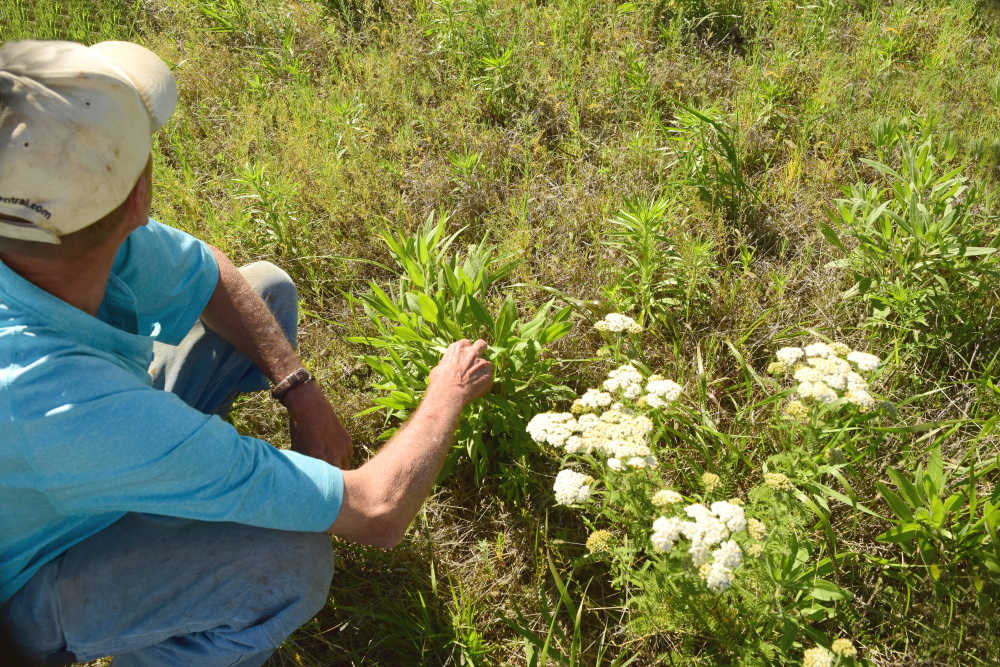Bison acres grow calves, hairy vetch
Friday, June 2, 2017

Darrell is a proponent of mass grazing. The manure left behind by animals is a natural fertilizer, helping develop and sustain a healthy environment and pasture.
Connie Jo Discoe/McCook Gazette
McCOOK, Neb. ó Darrell Meisterís herd of American bison and corriente steers is growing in a healthy, sustainable environment in pastures north of McCook.
The bison and Corrientes are rotated among pastures of native grasses and forbes. Darrell plans to develop even more rotations, converting corn stubble to fields of seasonal forage with a central watering tank. There wonít be anymore row crops on his 160 acres, Darrell says.
Darrell released the first seven bison to native grass pastures near Hugh Butler Lake north of McCook on April 22, 2016.

Darrellís herd of bison has grown by two. The herd, by nature, forms a perimeter around the calves.
Connie Jo Discoe/McCook Gazette

Darrell has planted 40 trees: Bur oaks (above), blue spruce, Ponderosa pine, cottonwood and cedar.
Connie Jo Discoe/McCook Gazette

Darrell plans more forage mixes for grazing: 1. Sun hemp, sunflower, cowpea, proso millet, sorghum sudan, turnip, radish and rape seed; 2. Oats, barley, peas and yellow sweet clover; and 3. Rye with hairy vetch.
Connie Jo Discoe/McCook Gazette

Darrell Meisterís American bison and corriente steers are not pets, nor are they tame or domesticated, but the bull will occasionally approach Darrell and his herd manager, Randy Woitaszewski, for apples. The bison and steers are confined within barbed wire, electric fencing and cattle crossings, all marked with warnings. Spectators are welcome to view and take photographs ó from outside the fences. Do not feed the animals.
Connie Jo Discoe/McCook Gazette
